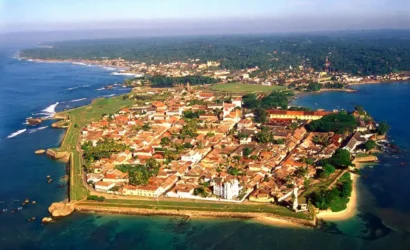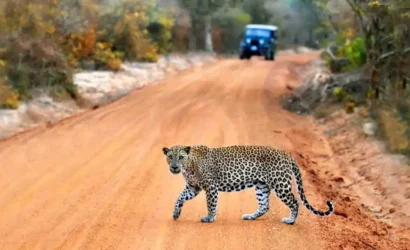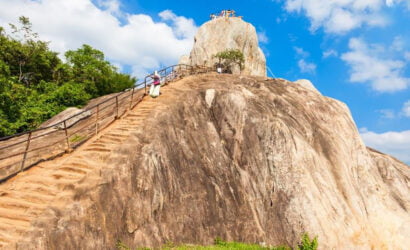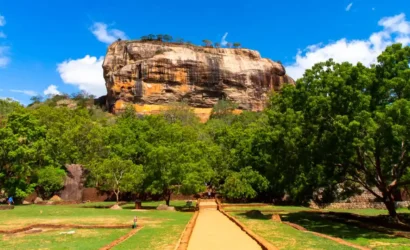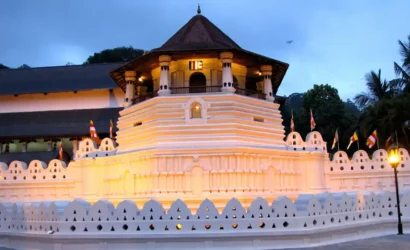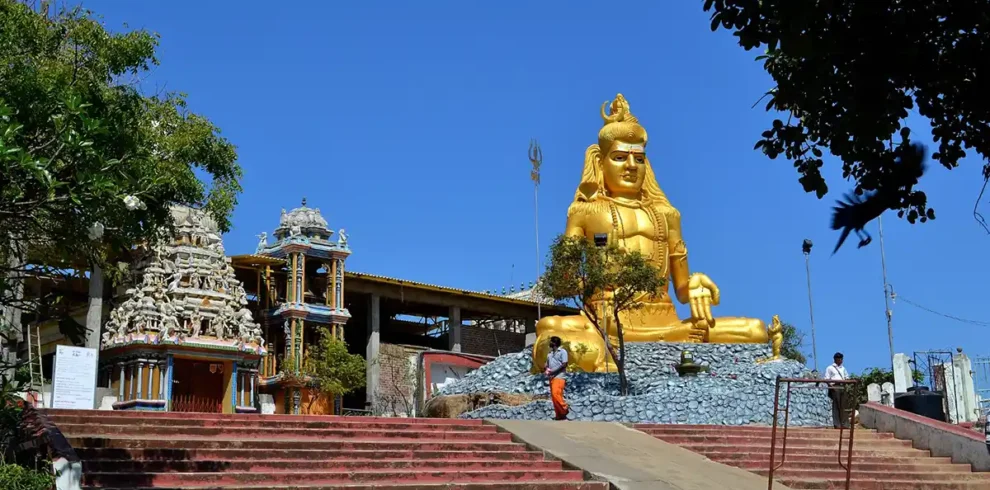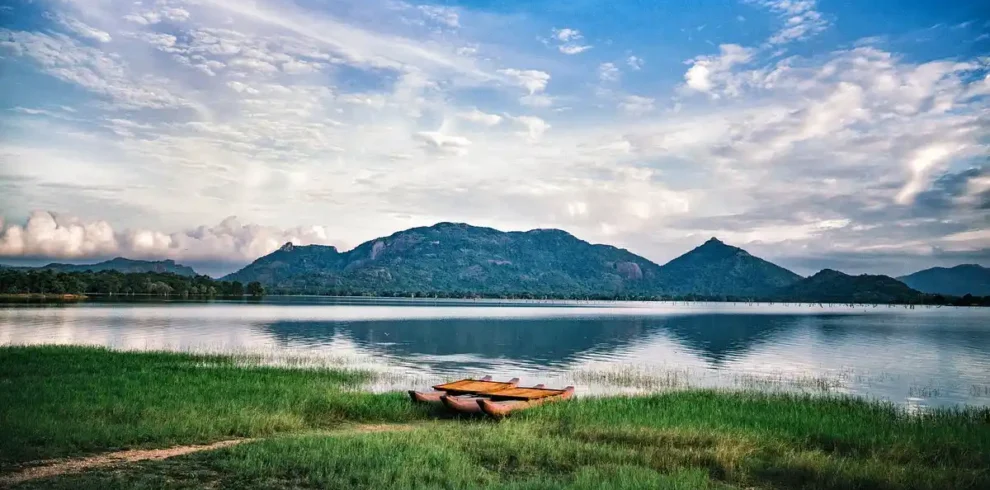The Lion Rock Fortress
Sigiriya, also known as the Lion Rock Fortress, is one of Sri Lanka’s most iconic landmarks. This ancient fortress stands atop a 200-meter rock in the central Matale District. Visitors marvel at the stunning views and explore the island’s rich history. As a UNESCO World Heritage Site, Sigiriya attracts thousands each year, eager to experience its natural beauty, architectural brilliance, and cultural significance.
Historical Significance
King Kashyapa built Sigiriya in the late 5th century (477–495 AD) after seizing the throne by assassinating his father. Consequently, he relocated the capital from Anuradhapura to Sigiriya and constructed a fortified palace there. The rock not only served as a stronghold but also symbolized Kashyapa’s power. However, following his defeat in 495 AD, Sigiriya transformed into a Buddhist monastery and remained so until the 14th century.
Key Attractions
- Lion’s Paw Entrance: Visitors begin their ascent at the Lion’s Paw entrance, a grand staircase flanked by two massive stone lion paws. These paws are remnants of a giant lion statue that once stood at the base of the rock, symbolizing strength and protection.
- Mirror Wall: The Mirror Wall, once polished to a high sheen, allowed the king to see his reflection as he walked by. Over time, visitors inscribed poems and comments on this wall, creating an ancient guestbook from the 7th century. These inscriptions offer insights into early travelers’ thoughts.
- The Frescoes: Halfway up the rock, visitors can admire the famous frescoes of Sigiriya. These vibrant paintings, depicting celestial maidens or “Sigiriya Damsels,” showcase exquisite detail and vivid colors, reflecting the artistic achievements of the period.
- The Summit: At the top of Sigiriya, the ruins of King Kashyapa’s palace include foundations of royal buildings, swimming pools, and gardens. From the summit, visitors enjoy panoramic views of the surrounding countryside, highlighting the ingenuity of ancient Sri Lankan architecture.
- Water Gardens: The base of Sigiriya features the water gardens, a marvel of landscape design and hydraulic engineering. These gardens include pools, fountains, and channels. They are divided into three sections: the outer moat, the middle garden, and the inner garden.
- Boulder Gardens: The Boulder Gardens blend natural rock formations with terraced pathways and caves, creating a harmonious setting that integrates with the environment.
- Terraced Gardens: The terraced gardens on Sigiriya’s slopes feature stepped platforms with ornamental plants and trees, enhancing the site’s aesthetic appeal and providing space for relaxation.
- Cobra Hood Cave: The Cobra Hood Cave, resembling a cobra’s hood, contains ancient inscriptions and carvings. This formation adds to Sigiriya’s mystical allure, illustrating the blend of natural and human artistry.
Sigiriya, with its unique blend of history, culture, and natural beauty, is a must-visit destination for anyone exploring Sri Lanka. From the grand Lion’s Paw entrance to the panoramic views at the summit, each feature of Sigiriya tells a story of ancient ingenuity and artistic achievement. This ancient rock fortress offers a rich and immersive experience that leaves visitors with a deep appreciation for Sri Lanka’s heritage and the enduring legacy of its past.
Highlights of The Lion Rock Fortress
- The Lion's Paw Entrance: Grand staircase flanked by massive stone lion paws marking the ascent.
- The Mirror Wall: Ancient polished wall inscribed with visitor poems and thoughts.
- The Frescoes: Vivid paintings of celestial maidens showcasing ancient Sri Lankan art.
- The Summit: Panoramic views and ruins of King Kashyapa's palace with royal structures.
- The Water Gardens: Symmetrical gardens with pools and fountains demonstrating advanced irrigation.
- Boulder Gardens: Integrated natural boulders creating caves and pathways in the landscape.
- Terraced Gardens: Stepped platforms enhancing the rock's natural beauty with ornamental plants.
- Cobra Hood Cave: Unique rock formation resembling a cobra’s hood with ancient carvings.

